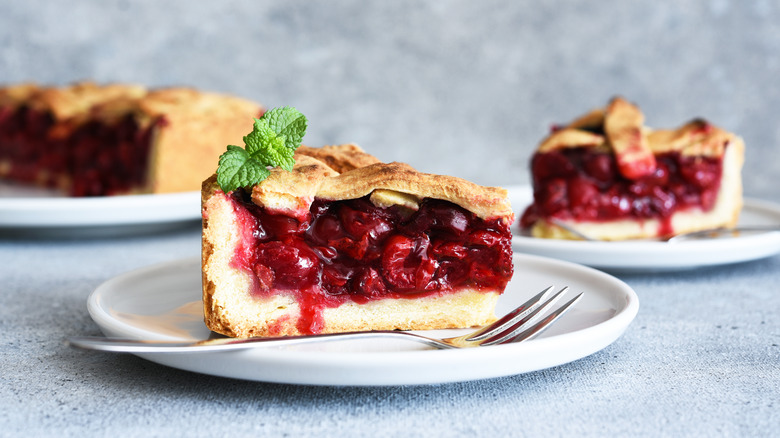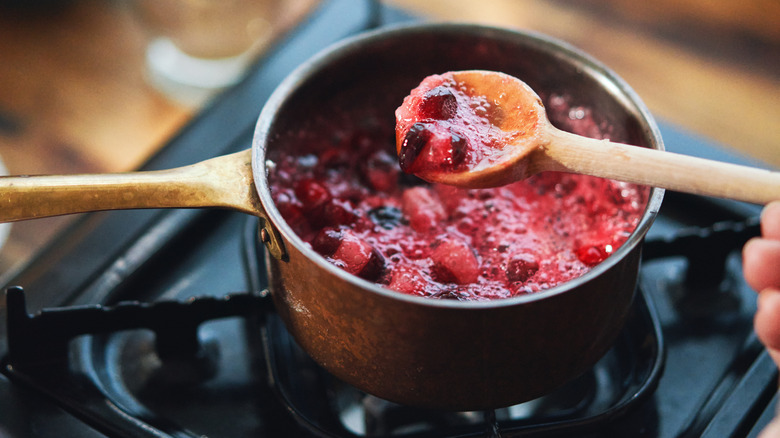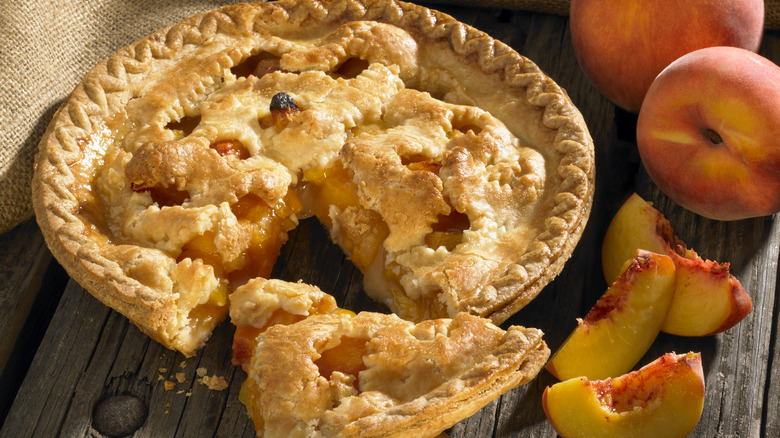Par-Cook Your Fruit For The Perfect Jammy-Not-Soggy Pie Filling
Making a pie that looks clean and tastes delicious can be tricky. Many amateur home bakers avoid baking pies because it can feel like an intimidating task. One of the challenges many bakers face is avoiding a soggy bottom, but one way to do this is by adding tapioca to your pie filling. Thankfully, Sarah Fennel, baker and founder of Broma Bakery, shared some additional tips for how to make a great pie, including how to achieve the perfect jammy-not-soggy pie filling.
"I like to par-cook half of the fruit in my filling alongside the sugar and flour amounts specified by the recipe," Fennel says. Par-cooking is short for partial cooking, and it's exactly what it sounds like: You partially cook part of your filling before adding it to the crust. Fennel further explains, "Once the fruit bursts/breaks down, I remove it from the heat, stir in the other half of my fruit and whatever acid (like lemon juice) the recipe calls for. Then place that into your crust and bake as the recipe instructs!"
According to Fennel, par-cooking can help remove some of the water content of the fruit before adding it to the rest of your filling. It can also begin the jamming process.
Why par-cooking creates a jammy pie filling
Fruit pies tend to get watery when they bake because of the high water content, which escapes via the breakdown of hemicellulose in the cell walls during the baking process. "The higher the water content in your fruit, the longer it's going to take to evaporate out of your pie, which — if you're not careful — can lead to an overcooked crust and undercooked filling in your pie," says Sarah Fennel.
When you par-cook some of those fruits, you allow the water to escape via steam and reduction before adding it to your pie. And, par-cooking jump-starts the jamming process by activating the pectin in the fruit, which subsequently gels together and creates a jam. You can also use added pectin, which is extracted from fruit and sold as a liquid or powder, to thicken up jams and pie fillings. This helps you achieve a jammy filling without having to bake your pie for too long, thus having a nice, thick filling with a perfectly baked crust.
Other tips for the perfect fruit-filled pie
To create a delicious pie with some texture and substance, Sarah Fennel recommends leaving some larger pieces of fruit in your pie. "In my opinion, the ideal fruit pie has a thick, buttery crust, and a filling that is a mixture of larger fruit pieces with a thick jammy filling. The bigger pieces of fruit will give your pie a nice bite, while the jammier filling both serves to hold the pie together as you slice through it and imparts a richer, more indulgent sweetness," she explains.
Here's another pro tip: Try adding some sour cream to your dough to achieve a softer, more tender pie crust. Replacing the water in your pie crust recipe with sour cream can help soften your crust, add some moisture to the dough, and add some overall subtle tang to your pie. Sour cream pie crusts work best for double-crusted fruit pies like peach or apple. Using these tips for a jammy and flavorful fruit filling may help you feel less intimated the next time you embark on a pie-making adventure.


